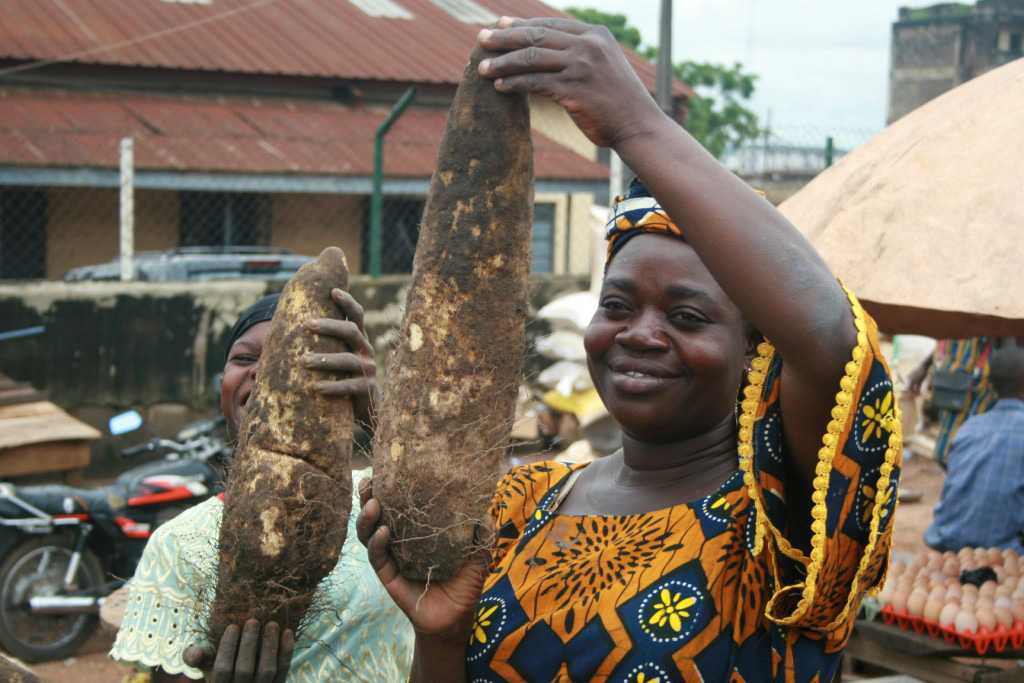
West African yam festivals are annual events that celebrate the season of yam harvest, community, and life itself. These festivals occur throughout West Africa and are essential events that mark the passing of another season, honor religious offerings, and provide a cultural focal point for a whole town to converge around. It is a community celebration, supported by local organizations or governments, bringing together dozens, hundreds, or even thousands of people every year.
The yam, which is considered by most West African ethnic groups to be a symbol of fertility and the sustainability of life, plays versatile cultural roles, used in inaugural, wedding, and naming ceremonies. The festivals, which mark an important changing of the seasons, bring the community together to celebrate the harvest and give thanks to the gods. Yam festivals often encourage and reward agricultural production.
West Africa accounts for 94% of the world’s yam production, with Nigeria alone producing about 50 million tonnes annually, more than two-thirds of the global yam crop. The cultivation of yams began in the region some 11,000 years ago, as a result of a cultural interaction between grain-crop agriculturalists who were being forced southward by the progressive desiccation of the Sahara and gatherers in the forests and savannahs of West Africa, who were eating wild yams but not yet cultivating them.
One of the popular yam festivals is the Iluyanwa Yam Festival, which is celebrated in Emure Ekiti, a town in Nigeria. Hundreds of townspeople troop into the streets, dressed in beautifully printed ankara outfits, and women sing praises and chant prayers. A man sounds a large gong, while children carry pieces of yam on their heads, careful not to let them fall. When they arrive at the palace, the king blesses the community and the harvest, and the festivalgoers celebrate by eating the new yam, whether boiled, pounded, roasted, or mashed into a porridge.
The Krufie Yam Festival is another festival celebrated by the indigenous people of Bredi, a community near Nkoranza in the Bono East region of Ghana. The people believe that the gods of the land have been very protective throughout the year and hence use the festival as a way of showing appreciation to the gods for their guidance and protection into a new bumper season.
Yam festivals are not only celebrated in Nigeria and Ghana but also in other West African countries such as the Republic of Benin and Togo. Outside the country, the festivals are prevalent among the Bono and Ashanti people of the Akan ethnic groups in Ghana, the Fon people of the Republic of Benin, the Ewe people in Togo, and the Ashanti and Anyi people of the Akan ethnic groups in Cote d’Ivoire.
The festivals are particularly popular in the southeastern part of Nigeria, where yams were brought to a king’s palace and, after the affair was officiated by a chief priest, instructions were given to plant setts of yams to secure another bountiful harvest in the next year. The festivals have become a significant contribution to West Africa’s tourism, bringing attention and tourists interested in the cuisine. Traditionally celebrated in the open, like most food festivals, yam festivals across regions attract both thousands of locals and visitors from the United States, Canada, Netherlands, and further afield.
In conclusion, yam festivals in West Africa celebrate the season of yam harvest, community, and life itself. The festivals are essential events, marking the passing of another season, honoring religious offerings, and providing a cultural focal point for a whole town to converge around. It is a community celebration that brings together people from all walks of life to celebrate the humble yam.


















